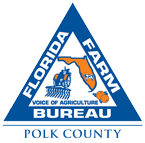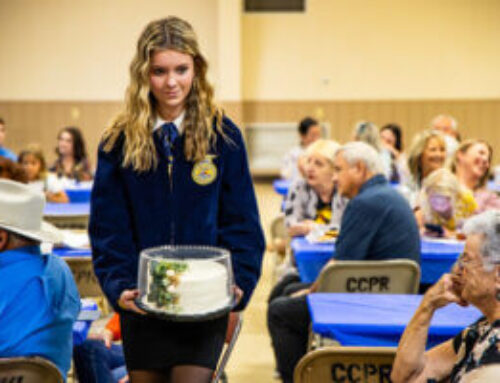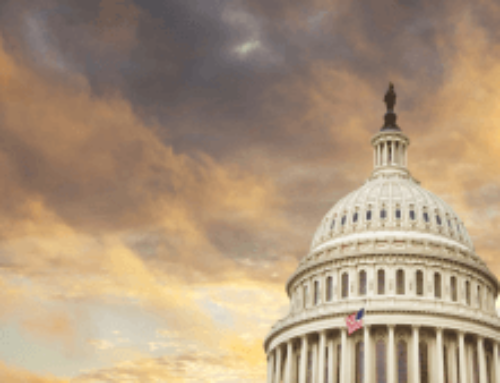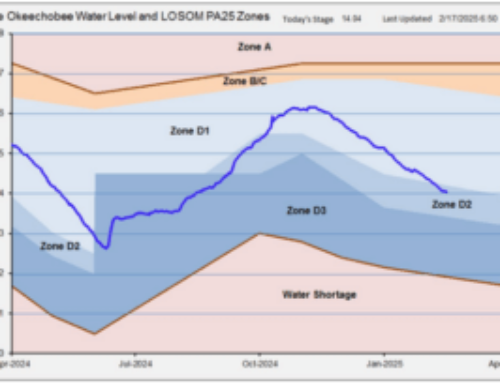New Citrus Family Harvests First Hemp Crop

June 2021 FloridAgriculture eNewsletter
By Phil Attinger, Staff Writer for midfloridanewspapers.com
 Two families gathered a week ago to harvest a small crop from a greenhouse, one with potential to be worth a couple of billion dollars in the next couple of years.
Two families gathered a week ago to harvest a small crop from a greenhouse, one with potential to be worth a couple of billion dollars in the next couple of years.
It’s a crop that Jeff Williams can definitely get behind — hemp for cannabidiol (CBD) oil production — because he’s seen first-hand how it works. His mother, Martha Williams, used a cream with the ingredient to deal with pain in her arm, and the pain was gone within minutes, she said.
The Williams family and the Farr family gathered on Dec. 19 with coolers of water and orange juice, proud grandparents snuggling a new grandbaby, to collect buds from approximately 450 plants in a 2,800-square-foot greenhouse surrounded by orange groves, not unlike early citrus harvests from Florida pioneers.
Williams’ partner, Zack Farr, said he and Williams are pioneers in this crop. It’s not native to subtropical climates and is photoperiodic, Farr said: It thrives best where the sunlight wanes and waxes significantly with the passage of seasons. To get the plants to flower more than once each year, Williams and Farr need to trick them into thinking spring has arrived again.
They hope to do this twice a year, and perhaps coax the plants to flower three times a year, if possible.
The men had fans mounted on the support posts of the greenhouse to dry out the plant. Humidity — of which Florida has a lot — creates problems with mold. They also have to keep any “male” plants away from their crop of females. Females make the seeds; males, the pollen. If the pollen gets to the buds, the seeds are no longer any good for CBD, the men said.
And when the plant flowers, the buds get heavy and weigh down the plant, they said. Any wind in storm-prone Florida will tear the plants apart.
“There are still a lot of processes to figure out,” Farr said.
Why go through all the trouble? For one, the hemp plant they’re growing — cannabis sativa — produces CBD without the psychotropic properties of its euphoria-causing cousin marijuana, still illegal under federal law. Also, industrial and CBD hemp has at least 50 commercial and consumer uses, beyond being medicinal.
As reported this month, hemp has begun to blaze its own trail among Florida’s agriculturalists since it first received clearance for legal cultivation in the state seven months ago. The Florida Department of Agriculture and Consumer Services first issued hemp cultivation permits on April 27 and a 2018 federal farm bill legalized hemp as an agricultural crop after decades of debate over it.
“I have projected that we are going to have seen, within the next three to five years, nearly 300,000 acres, which is about half of what citrus is,” Agriculture Commissioner Nikki Fried told members of the Enterprise Florida Board of Directors on Dec. 8. She projects the state to see nearly 300,000 acres of the plant in the next three to five years, slightly less than half of the state’s 700,000 citrus acres.
For now, her forecast for this first year is 35,000 acres, by next April. As a former medical marijuana lobbyist, Fried estimates the current acreage could produce $270 million in economic impact, $136 million in revenue and support more than 8,000 jobs.
Overall, Fried said, the agricultural industry faces a potential $5 billion impact from the coronavirus pandemic but remains one of the state’s biggest economic drivers, with tourism down 34% this year.
In November 2019, Ricardo Alvarez, South Florida regional director for the Florida Department of Agriculture and Consumer Services, said the seeds could be used as soybeans are and could provide pet feed; body oils and lotions; oil for candles, lanterns and paint; clothing, like shirts, pants and towels; plastic; paper; fuel, and construction, through the use of “hempcrete,” a fire resistant mix of plant stalks and lime.
Alvarez also said the plant can even be used to make biodegradable drinking straws, and an acre of hemp could make as much paper as two to four acres of trees.
For now, Williams and Farr are focusing on CBD oil. Williams’ biggest satisfaction from this is the cooperation and support he’s seen from members of the community, including Bagwell Lumber, Robbins Nursery and Sumner Irrigation to build the greenhouse.
“We’ve had a lot of help,” Williams said. “We’re excited.”
There’s also the hope they, in some small way, might help fight the drug war by giving a potentially safer alternative to over-prescribed opioids. He said advocates like Jerry Nunn of Nunn Better Health & Wellness in Lake Placid have helped him see the alternative.
“Sometimes people don’t need them,” Williams said. “This will replace a lot of pain treatments.”
This article courtesy of midfloridanewspapers.com.




